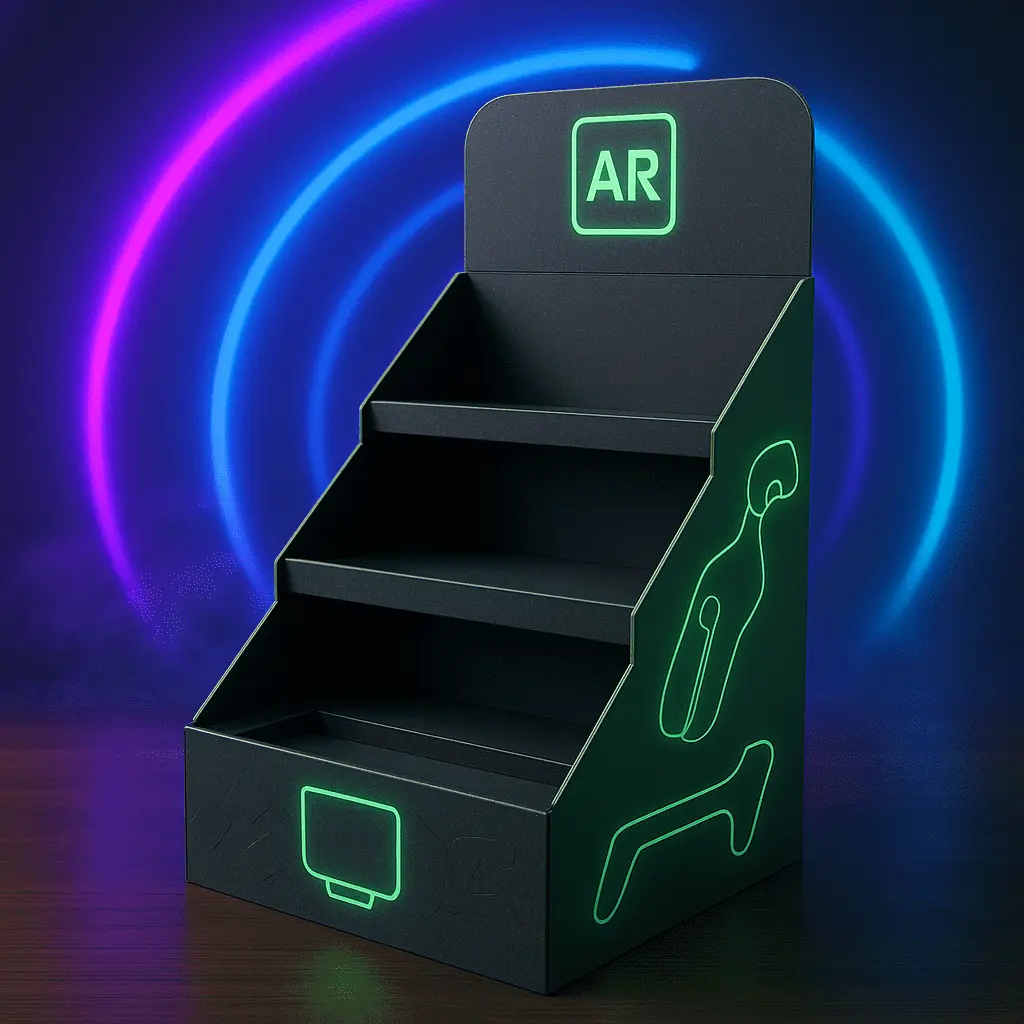How PDQ Displays Adapt to Changing Retail Regulations?
PDQ displays, or "Pretty Darn Quick" displays, have long been a staple in retail environments for their efficiency and convenience. As retail regulations evolve, these versatile merchandising solutions are adapting to meet new challenges. From sustainability requirements to safety standards, PDQ displays are undergoing transformations to remain compliant while still delivering optimal product visibility and sales performance. Manufacturers and retailers are collaborating to create innovative designs that not only adhere to changing regulations but also enhance the shopping experience. By incorporating eco-friendly materials, modular components, and smart technology, PDQ displays are proving their resilience and adaptability in the face of an ever-changing retail landscape.

The Evolution of Retail Regulations and Their Impact on PDQ Displays
Understanding the Shifting Regulatory Landscape
Retail regulations are in a constant state of flux, driven by factors such as environmental concerns, consumer safety, and accessibility requirements. These changes have a profound impact on how products are displayed and marketed in stores. For PDQ displays, this means adapting to new guidelines while maintaining their core function of showcasing products effectively.
One of the most significant regulatory shifts in recent years has been the emphasis on sustainability. Many jurisdictions now require retailers to reduce packaging waste and use more environmentally friendly materials. This has led to a reimagining of PDQ display design, with a focus on recyclable and biodegradable components.
Additionally, safety regulations have become more stringent, particularly in the wake of global health concerns. PDQ displays must now be designed with hygiene in mind, incorporating features that minimize touch points and facilitate easy cleaning.
Adapting Display Materials to Meet New Standards
In response to sustainability regulations, PDQ display manufacturers are exploring alternative materials that meet both environmental and functional requirements. Recycled cardboard and plastic are becoming increasingly popular choices, offering durability while reducing the environmental footprint.
Some innovative companies are even experimenting with biodegradable materials derived from plant-based sources. These eco-friendly options not only comply with regulations but also appeal to environmentally conscious consumers.
The challenge lies in balancing the use of sustainable materials with the structural integrity needed for effective product display. Manufacturers are investing in research and development to create robust, eco-friendly displays that can withstand the rigors of retail environments.
Incorporating Safety Features in PDQ Display Design
Safety regulations have prompted significant changes in PDQ display design. To address concerns about product contamination and the spread of pathogens, manufacturers are integrating antimicrobial coatings and touchless dispensing mechanisms into their displays.
Some PDQ displays now feature built-in sanitizer dispensers or are designed to accommodate personal protective equipment. These additions not only comply with safety regulations but also provide peace of mind to shoppers.
Moreover, the materials used in PDQ displays are being selected for their ease of cleaning and disinfection. Smooth, non-porous surfaces that can withstand frequent sanitization have become a priority in display design.
Innovative Design Solutions for Regulatory Compliance
Modular and Customizable PDQ Displays
One of the most effective ways PDQ displays are adapting to changing regulations is through modular design. This approach allows for easy customization and reconfiguration, enabling retailers to quickly adjust their displays to meet new requirements without the need for complete replacement.
Modular PDQ displays consist of interchangeable components that can be assembled in various configurations. This flexibility allows retailers to adapt to different product sizes, promotional needs, and regulatory changes with minimal disruption.
Additionally, modular designs often reduce waste, as individual components can be replaced or updated as needed, rather than discarding entire displays. This aligns well with sustainability regulations and helps retailers minimize their environmental impact.
Smart Technology Integration in PDQ Displays
As regulations evolve, so does the technology incorporated into PDQ displays. Smart features are being integrated to enhance compliance and improve the overall shopping experience.
For instance, some PDQ displays now include digital screens that can display product information, allergen warnings, and regulatory compliance details. This dynamic content can be updated remotely, ensuring that displays always show the most current and accurate information.
Sensors and IoT (Internet of Things) connectivity are also being incorporated into PDQ displays. These technologies can monitor product levels, track customer interactions, and even adjust lighting or temperature to optimize product preservation. Such features not only help with regulatory compliance but also provide valuable data for retailers to improve their merchandising strategies.
Space-Efficient and Accessibility-Focused Designs
Changing regulations often include requirements for store layout and accessibility. PDQ displays are adapting by becoming more space-efficient and accessible to all customers, including those with disabilities.
Compact, vertical designs are gaining popularity, allowing retailers to maximize floor space while still providing ample product visibility. These space-saving displays help stores comply with aisle width regulations and fire safety codes.
Accessibility features, such as adjustable heights and easy-reach product placement, are being incorporated into PDQ display designs. These modifications ensure that products are accessible to customers of all abilities, complying with inclusive design regulations and expanding the potential customer base.
The Future of PDQ Displays in a Regulated Retail Environment
Anticipating Future Regulatory Trends
As retailers and manufacturers look to the future, anticipating upcoming regulatory changes is crucial for staying ahead of the curve. Industry experts are closely monitoring trends in sustainability, consumer safety, and digital integration to predict future requirements for PDQ displays.
One emerging trend is the focus on circular economy principles. Future regulations may require PDQ displays to be fully recyclable or reusable, pushing manufacturers to develop innovative materials and design strategies that extend the lifecycle of displays.
Another area of potential regulation is related to digital privacy and data collection. As PDQ displays become more technologically advanced, regulations governing the collection and use of consumer data may impact how smart displays are designed and operated.
Collaboration Between Retailers and Manufacturers
The rapidly changing regulatory landscape has fostered closer collaboration between retailers and PDQ display manufacturers. This partnership is essential for developing displays that not only meet current regulations but are also adaptable to future changes.
Retailers are providing valuable insights into their specific needs and challenges, while manufacturers are bringing technical expertise and innovative solutions to the table. This collaborative approach results in PDQ displays that are both compliant and effective in driving sales.
Some retailers are even working with manufacturers to create custom PDQ display solutions that address unique regulatory challenges in their specific markets or product categories. This tailored approach ensures optimal compliance and performance.
Investing in Research and Development
To stay ahead of regulatory changes, leading PDQ display manufacturers are investing heavily in research and development. This includes exploring new materials, testing innovative design concepts, and developing advanced manufacturing techniques.
Sustainability is a key focus of many R&D efforts, with researchers working on biodegradable plastics, recycled materials with enhanced durability, and energy-efficient production methods. These innovations not only help meet current regulations but also position companies to adapt quickly to future requirements.
Additionally, research into consumer behavior and shopping patterns is informing the development of PDQ displays that are not only compliant but also highly effective in attracting customer attention and driving purchases. This holistic approach ensures that regulatory adaptations do not come at the cost of display performance.
Conclusion
As retail regulations continue to evolve, PDQ displays are demonstrating remarkable adaptability. Through innovative design, material selection, and technology integration, these essential retail fixtures are not just keeping pace with regulatory changes but are setting new standards for sustainability, safety, and efficiency. The future of PDQ displays lies in their ability to seamlessly blend compliance with performance, creating solutions that benefit retailers, consumers, and the environment alike. As the retail landscape continues to transform, PDQ displays will undoubtedly remain at the forefront of merchandising innovation, ready to meet whatever challenges lie ahead.
Contact Us
For more information on how our PDQ displays can help you stay compliant with changing retail regulations while maximizing your product visibility, please contact us at support@fetchingprinting.com. Let us help you create custom display solutions that meet your unique needs and regulatory requirements.
References
1. Smith, J. (2023). "The Evolution of Retail Display Regulations: A Global Perspective." Journal of Retail Innovation, 15(2), 78-92.
2. Chen, L., & Rodriguez, A. (2022). "Sustainable Materials in Point-of-Purchase Displays: Challenges and Opportunities." International Journal of Retail & Distribution Management, 50(4), 456-470.
3. Thompson, E. (2023). "Smart Technology Integration in Retail Displays: Compliance and Consumer Engagement." Retail Technology Review, 8(3), 112-125.
4. Watson, M., & Kim, S. (2022). "Accessibility in Retail Environments: The Role of Adaptive Display Solutions." Journal of Inclusive Design, 17(1), 23-38.
5. Brown, R. (2023). "The Impact of Changing Retail Regulations on Display Manufacturing: An Industry Analysis." Retail Business Quarterly, 31(2), 45-59.
6. Lee, H., & Patel, N. (2022). "Collaborative Approaches to Regulatory Compliance in Retail Merchandising." International Journal of Retail Strategy, 19(4), 301-315.




